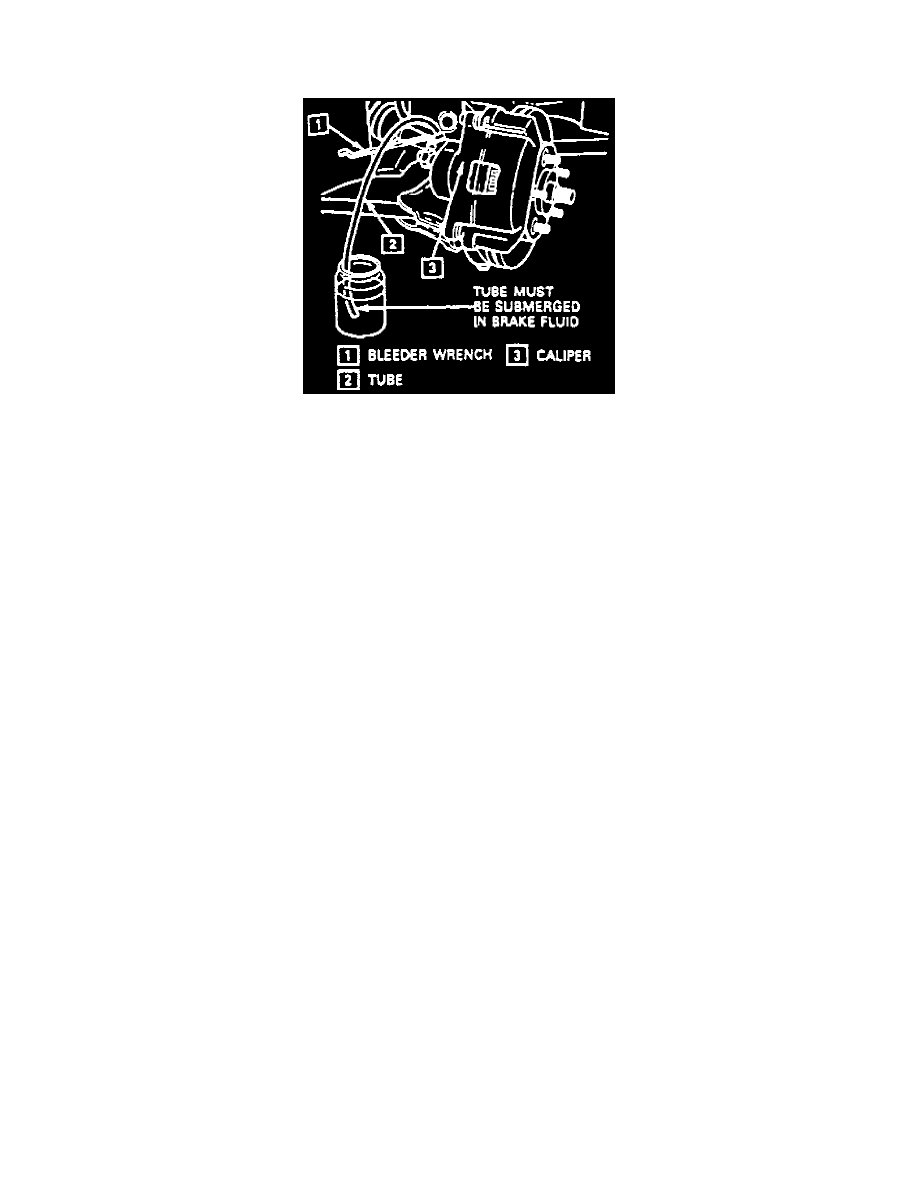Skylark V6-3100 3.1L VIN M SFI (1996)

Brake Bleeding: Service and Repair
Manual
Fig. 210 Brake System Manual Bleed.
NOTE: Pressure bleeding is recommended for all hydraulic systems. However, if a pressure bleeder is unavailable, use the following procedure.
Brake fluid damages painted surfaces. Immediately clean any spilled fluid.
1. Remove vacuum reserve by pumping brakes several times with engine off.
2. Fill master cylinder reservoir with clean brake fluid. Check fluid level often during bleeding procedure; do not let reservoir fall below half full.
3. If necessary, bleed master cylinder as follows:
a. Disconnect master cylinder forward brake line connection until fluid flows from reservoir. Reconnect and tighten brake line.
b. Instruct an assistant to slowly depress brake pedal one time and hold.
c. Crack open front brake line connection again, purging air from cylinder.
d. Retighten connection and slowly release brake pedal.
e. Wait 15 seconds, then repeat until all air is purged.
f.
Bleed the rearward (nearest the cowl) brake line connection by repeating steps a through e.
4. Loosen, then slightly retighten bleeder valves at all four wheels. Repair any broken, stripped or frozen valves at this time.
5. Proceed to appropriate wheel first and follow set sequence according to Wheel Bleeding Sequence.
6. Place transparent tube over bleeder valve, then allow tube to hang down into transparent container, Fig. 16. Ensure end of tube is submerged in
clean brake fluid.
7. Instruct an assistant to slowly depress brake pedal one time and hold.
8. Crack open bleeder valve, purging air from cylinder. Retighten bleeder screw and slowly release pedal.
9. Wait 15 seconds, then repeat steps 7 and 8. Repeat these steps until all air is bled from system.
